
This obviously French term comes from the Theater and it literally means "placed on the scene." With that in mind, you can think about what may be placed on a scene in a theater production. But the term extends beyond just props, and includes a number of items including costuming, hair styling, make up, acting styles (and there are numerous methods for acting--something we will return to later), and lighting. These are all part of a theater performance--but they have crucial roles to play in film as well.
So Mise-en-Scene is basically anything that you might imagine from the film that would translate into a theatrical production (these items are clearly of an entirely different order than cinematography or editing--the theater doesn't have either of these). In film, though, because the camera can be turned off, set designers, costume designers, or make-up artists may subtly change the set, costuming, or make up for only a fraction of a second (or longer) in order to create an effect. These effects are often hard to perceive but can have a profound impact on your reception of the scene.
In Hollywood films, Mise-en-scene is often broken down into a number of different roles: set design, costume design, hair, make-up, etc.
The following two images from Hitchcock's North by Northwest offer interesting examples.
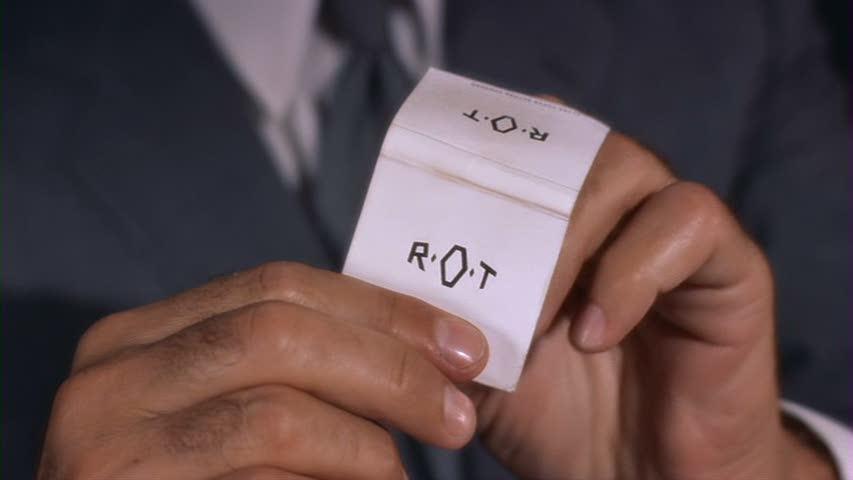
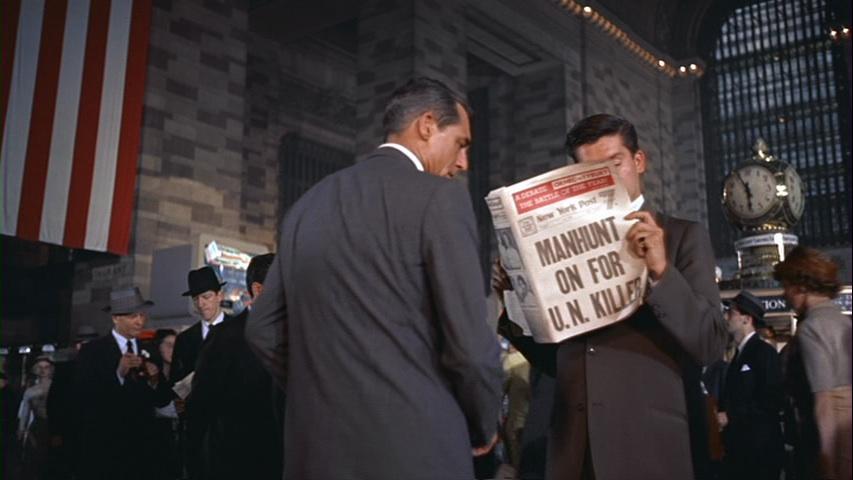
Both of these stills clearly have information that is meant to be read (they can be referred to as semiotic images). The objects in the shots provide crucial information for understanding the action of the film. Such objects don't have to contain words or symbols as in these two shots. Sometimes a physical object, an item of clothing, or even a color will convey meaning.
Speaking of color, many films use colors to convey mood or information that is never externalized through acting or dialogue. Colors don't have stable meanings but they do have wide-spread associations. Cold colors really do feel cold. And the color Red often will send off alarm bells. Color and light will frequently direct the eye. Where does the eye go in the image below? It's pretty obvious. This is another semiotic image since the words HARTFORD POLICE are meant to be read, but the bright green draws our attention to those words. And the edifice of the building is cold and forbidding.
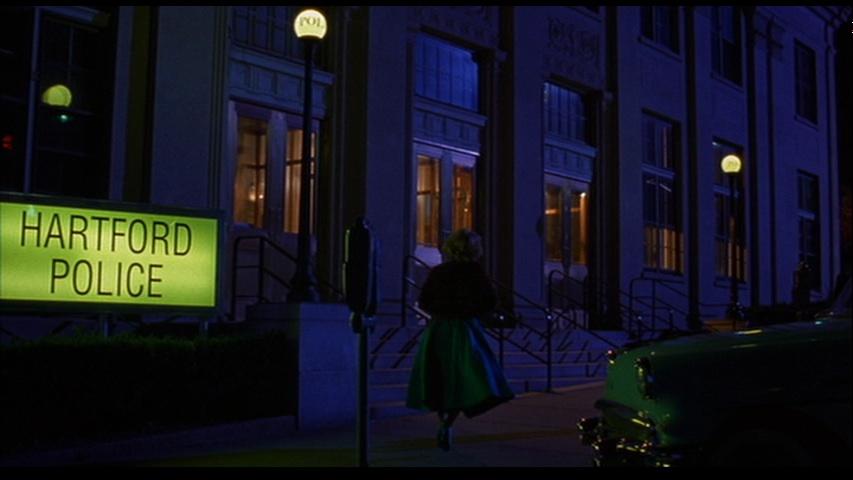
The next two images immediately follow one another so they set up an interesting contrast. (They are from the film FAR FROM HEAVEN, as is the above still). Two people are speaking to one another on the telephone. The woman (Julianne Moore) is in a room lit with neutral, slightly warm earth tones. The man (Dennis Quaid) is in a much more artificial and theatrical space--bathed in green light. In the context of this film, the green light become associated with the man's sexual obsessions and transgressions.
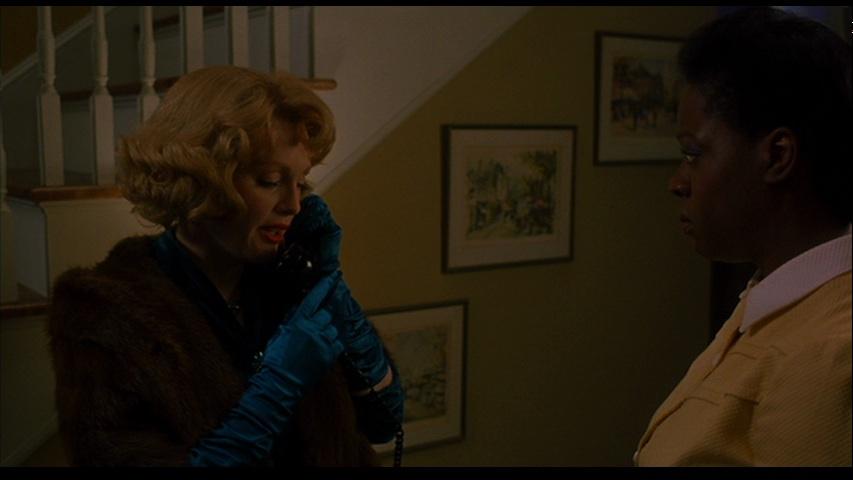
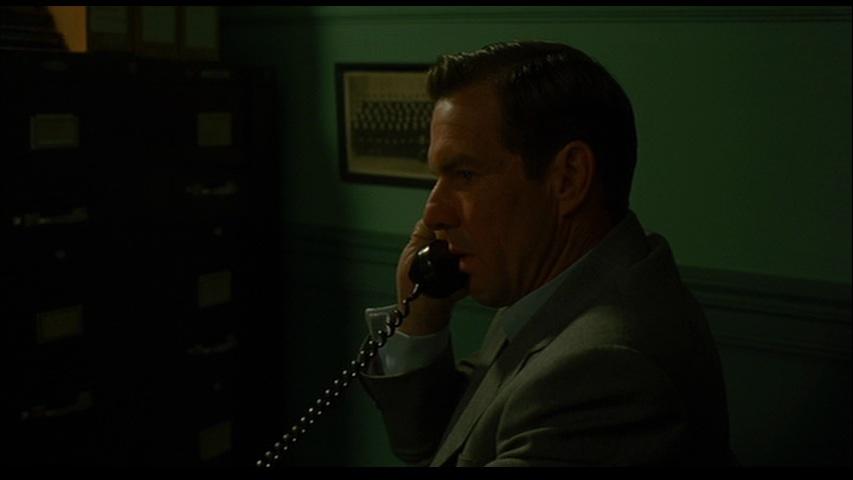
Another example involves creating an effect of extreme artificiality through color. The image below offers an example of a highly saturated color. The image has been manipulated to give the create an extreme lush intensity to the color. This is not naturalistic (it doesn't mimic nature) but expressionistic (it creates an expression).
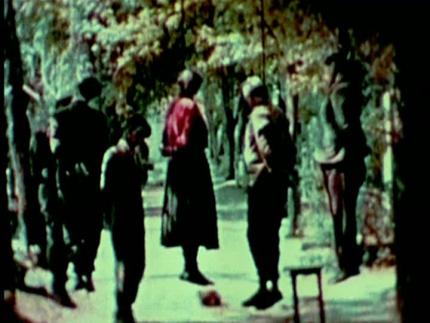
Lighting, color, and even sound are often used in anti-naturalistic ways in order to create an expression. Sometimes the best actors don't have to do a darn thing if their set designers are on the ball. Much can be expressed through mise-en-scene.
There's much more that can be said of color and mise-en-scene. We will return to these topics.
Please read Hayward's entry on Mise-en-scene, Lighting, Art Direction, Diegesis/diegetic.


